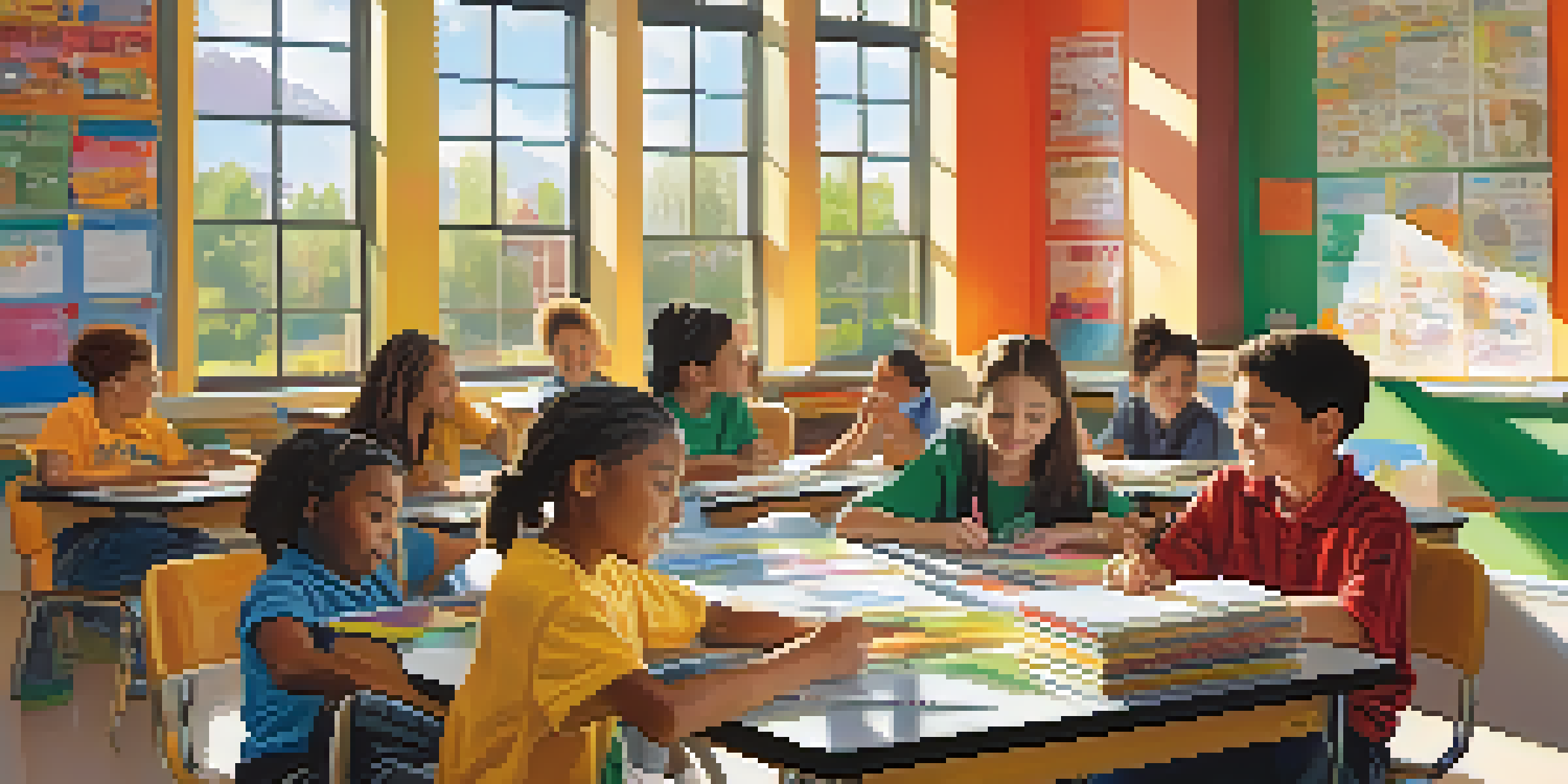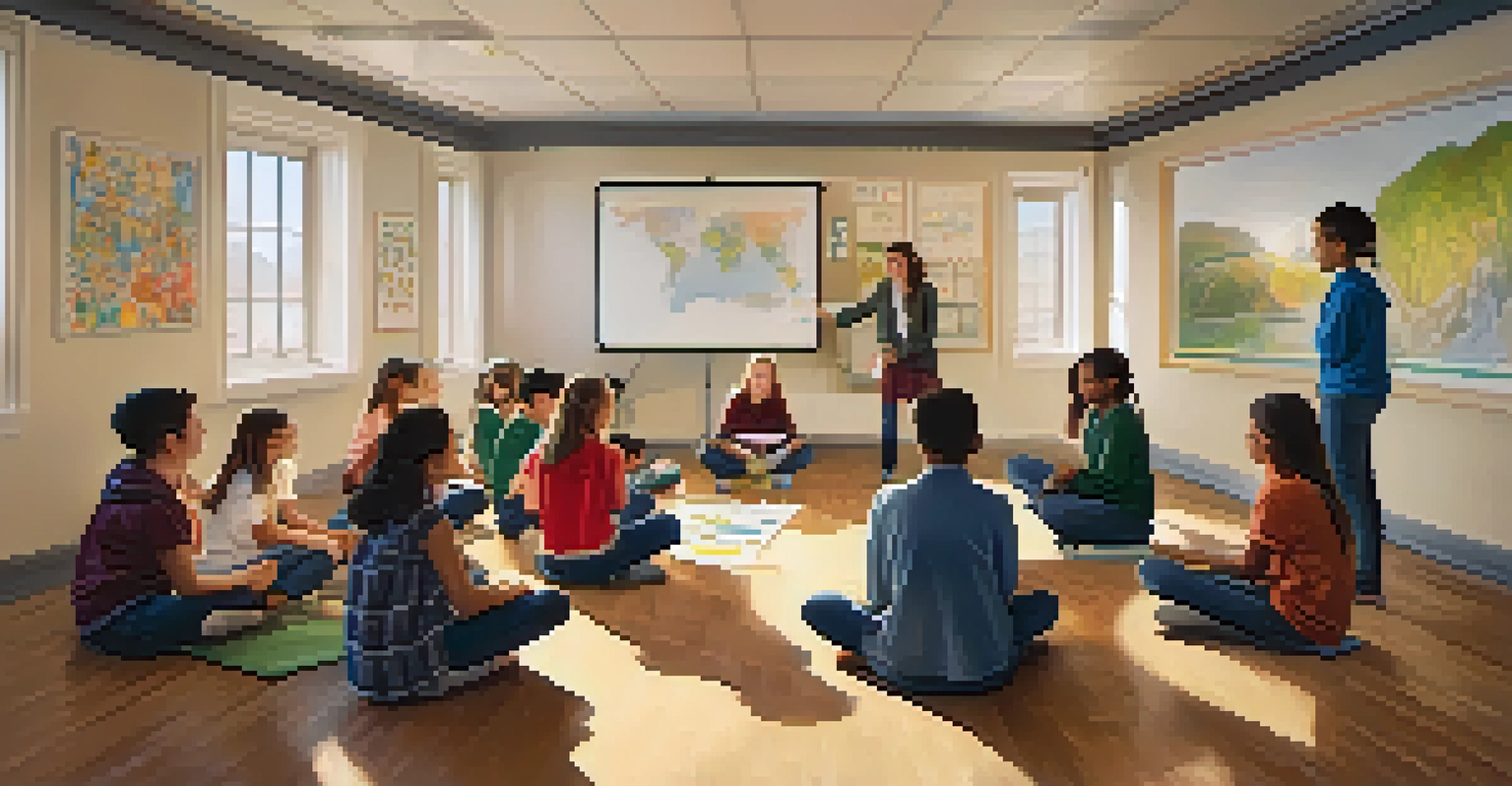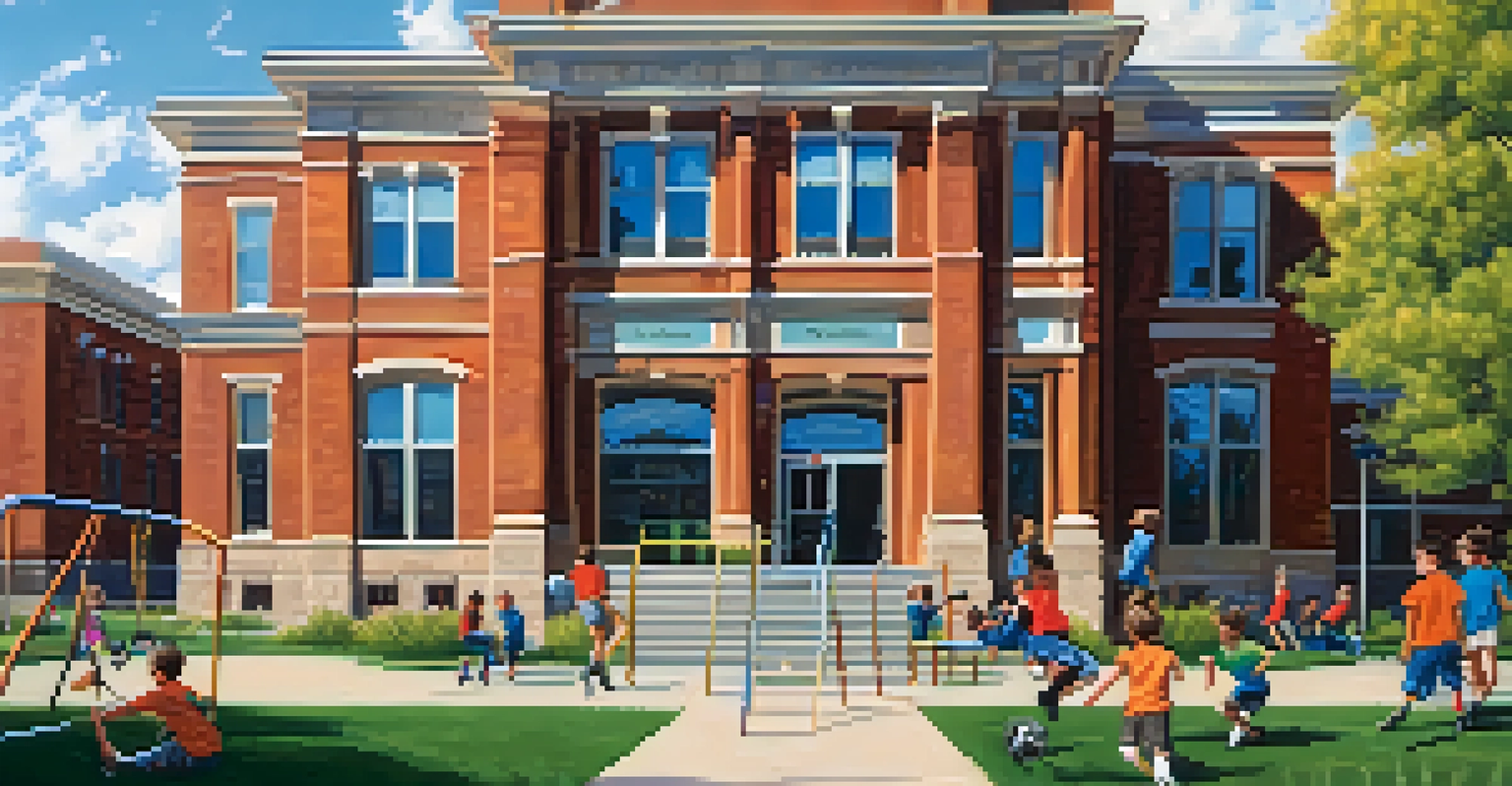Comparing Public and Private Education in Utah: Pros and Cons

Understanding Public Education in Utah
Public education in Utah is primarily funded by state taxes, making it accessible to all residents. This system aims to provide a free education to children from kindergarten through 12th grade, ensuring that every child has the right to learn. Public schools in Utah are governed by local school districts, which allows for community involvement and tailored education strategies.
Education is the most powerful weapon which you can use to change the world.
One of the most significant advantages of public education is its diversity, as students from various backgrounds come together to learn. This exposure can foster social skills and empathy among students, preparing them for a multicultural society. Public schools also offer a wide range of extracurricular activities, from sports to arts programs, which can enhance students' overall development.
However, public schools in Utah face challenges like overcrowded classrooms and limited funding, which can impact the quality of education. Teachers often juggle large class sizes, making personalized attention a struggle. Despite these issues, many parents appreciate the accountability of public schools and the standardized curriculum that ensures a consistent educational experience.
Exploring Private Education Options in Utah
Private education in Utah provides an alternative to public schooling, often emphasizing smaller class sizes and individualized attention. Private schools are funded through tuition and donations, which allows them to offer specialized programs that may not be available in public schools. This can be appealing for parents seeking a tailored educational experience for their children.

One notable advantage of private education is the flexibility in curriculum choices. Many private schools can adopt innovative teaching methods and focus on specific areas, such as religious education or advanced academics. This adaptability can lead to enriched learning experiences, catering to the unique needs of students and their families.
Public Education is Accessible
Public education in Utah is funded by state taxes, ensuring a free schooling option for all residents.
On the flip side, the cost of private education can be a significant barrier for many families. Tuition rates vary widely, and while some schools offer scholarships, not all students can afford this option. Additionally, the lack of oversight compared to public schools means that parents must do thorough research to ensure the quality of education provided.
Comparing Costs of Public and Private Education
When considering education options in Utah, cost is a major factor for many families. Public education is free, funded by taxes, making it an accessible choice for all. In contrast, private schools require tuition, which can range from a few thousand to over twenty thousand dollars annually, depending on the institution.
The function of education is to teach one to think intensively and to think critically. Intelligence plus character – that is the goal of true education.
While public schools may be free, they often have associated costs such as supplies, extracurricular fees, and transportation. Parents should be aware that these expenses can add up, making public education more costly than it initially appears. On the other hand, private schools may offer a more predictable financial commitment through their tuition structures.
Ultimately, families must weigh the financial implications against the perceived value of each educational system. The choice may depend on the family's financial situation, priorities regarding education quality, and willingness to invest in their child's future.
Academic Performance: Public vs. Private Education
Academic performance is often a key concern for parents when choosing between public and private education. Research indicates that students in private schools tend to outperform their public school counterparts on standardized tests. However, it's essential to consider factors like socio-economic status, parental involvement, and school resources when interpreting these results.
Public schools in Utah have made significant strides in improving academic outcomes through various initiatives and programs. Many public schools offer Advanced Placement (AP) courses and honors programs, providing students with opportunities to excel academically. Moreover, public schools are often held to state standards, ensuring a baseline level of education across the board.
Private Schools Offer Flexibility
Private education provides smaller class sizes and customizable curricula, appealing to families seeking tailored learning experiences.
That said, the emphasis on college readiness and advanced coursework in private schools can be appealing for families focused on higher education. Private institutions often have the resources to provide specialized tutoring and college counseling, which can help students navigate the complexities of college admissions.
Class Size and Student-Teacher Ratios
Class size is another critical factor when comparing public and private education. Private schools typically boast smaller class sizes, which can lead to more personalized attention for each student. This intimate learning environment allows teachers to tailor their instruction to individual needs, fostering a deeper understanding of the material.
In contrast, public schools in Utah often face overcrowded classrooms, which can hinder the learning experience. Teachers may have to manage larger groups of students, making it challenging to provide individualized support. However, public schools are increasingly adopting strategies to address this issue, such as hiring additional staff or utilizing technology in the classroom.
The student-teacher ratio can significantly impact a child's educational experience. Parents should consider whether they value the individualized attention offered by private schools or the diverse learning environment found in public schools when making their decision.
Curriculum Differences: Public vs. Private Schools
The curriculum is another area where public and private schools diverge. Public schools in Utah must adhere to state-mandated guidelines and standards, ensuring a consistent educational framework for all students. This structure can provide a sense of stability and accountability, as parents know their children are receiving a state-approved education.
Private schools, on the other hand, have more flexibility in designing their curricula. Many private institutions incorporate unique teaching philosophies, such as Montessori or Waldorf methods, which can create engaging and innovative learning experiences. This freedom allows private schools to focus on specific subjects or values, appealing to families with particular educational goals.
Cost Impacts Educational Choices
While public education is free, families must consider additional costs, whereas private school tuition can vary significantly.
However, the variability in private school curricula means that not all private institutions will provide the same quality of education. Parents must research and evaluate schools carefully to ensure they align with their child's learning style and educational needs.
Social Environment and Community Involvement
The social environment in schools can greatly influence a child's development, and this is where public and private schools differ. Public schools often have a diverse student body, which can enhance social skills and cultural awareness. Children learn to navigate different perspectives and backgrounds, preparing them for life in a global society.
In contrast, private schools may offer a more homogeneous environment, depending on their admission criteria. While this can provide a sense of belonging for some families, it may limit exposure to diverse viewpoints. However, many private institutions emphasize community service and character development, encouraging students to engage with the broader community.

Ultimately, the choice between public and private education will depend on the values and priorities of each family. Considering the social environment and community involvement can help parents make an informed decision that aligns with their child's needs and aspirations.